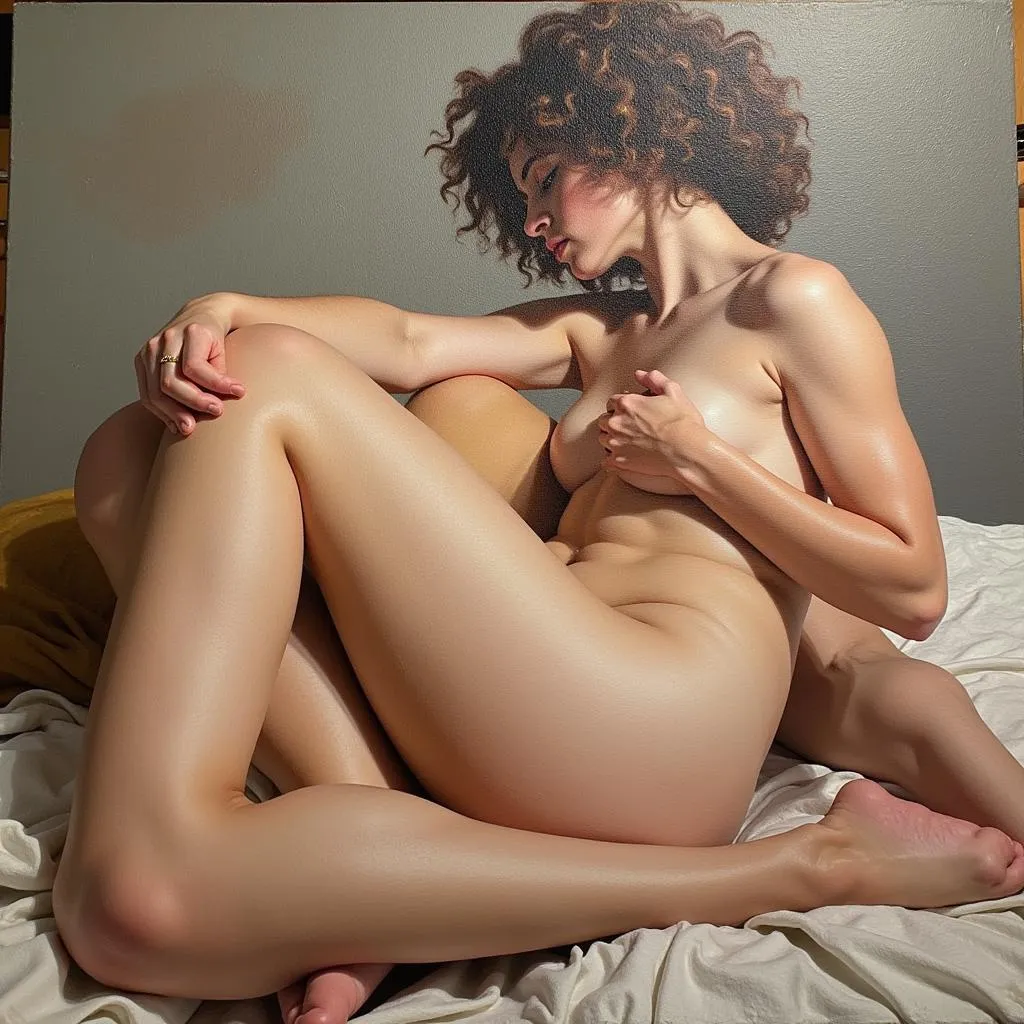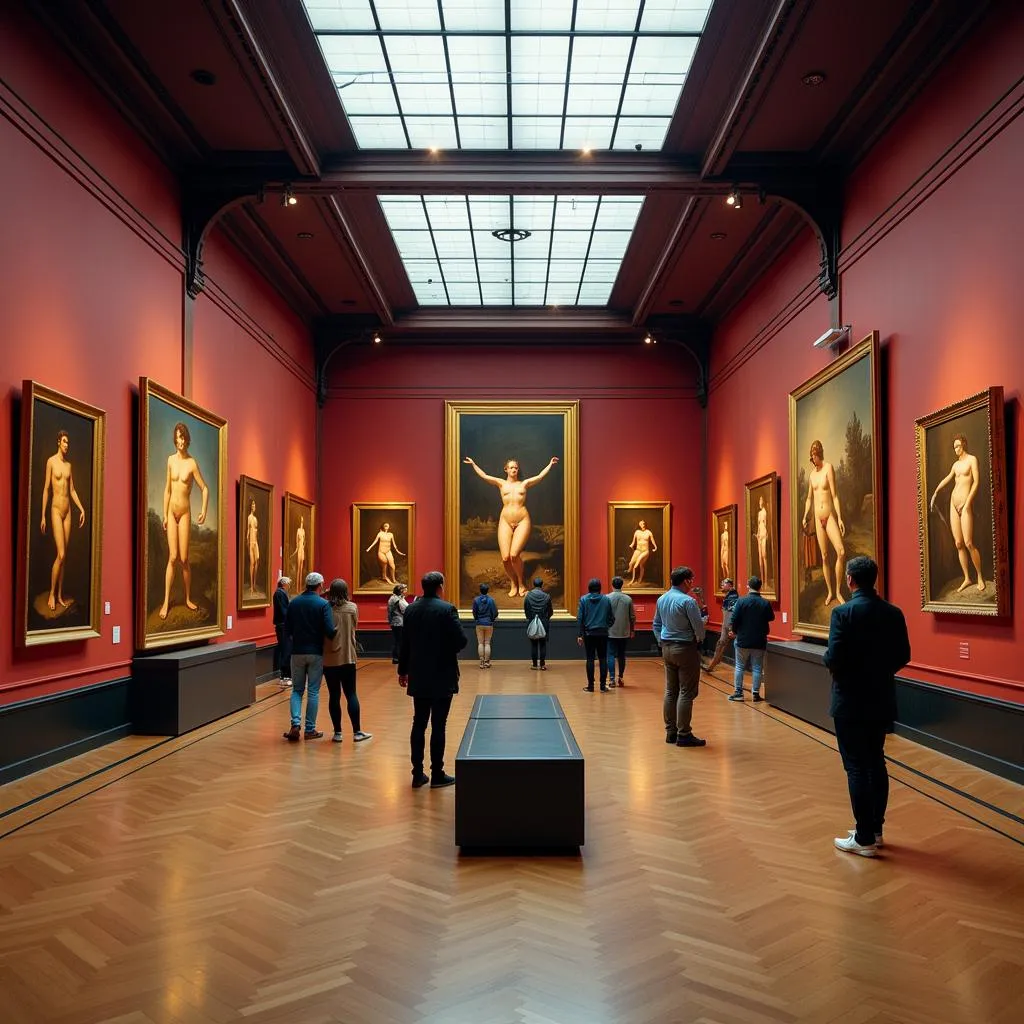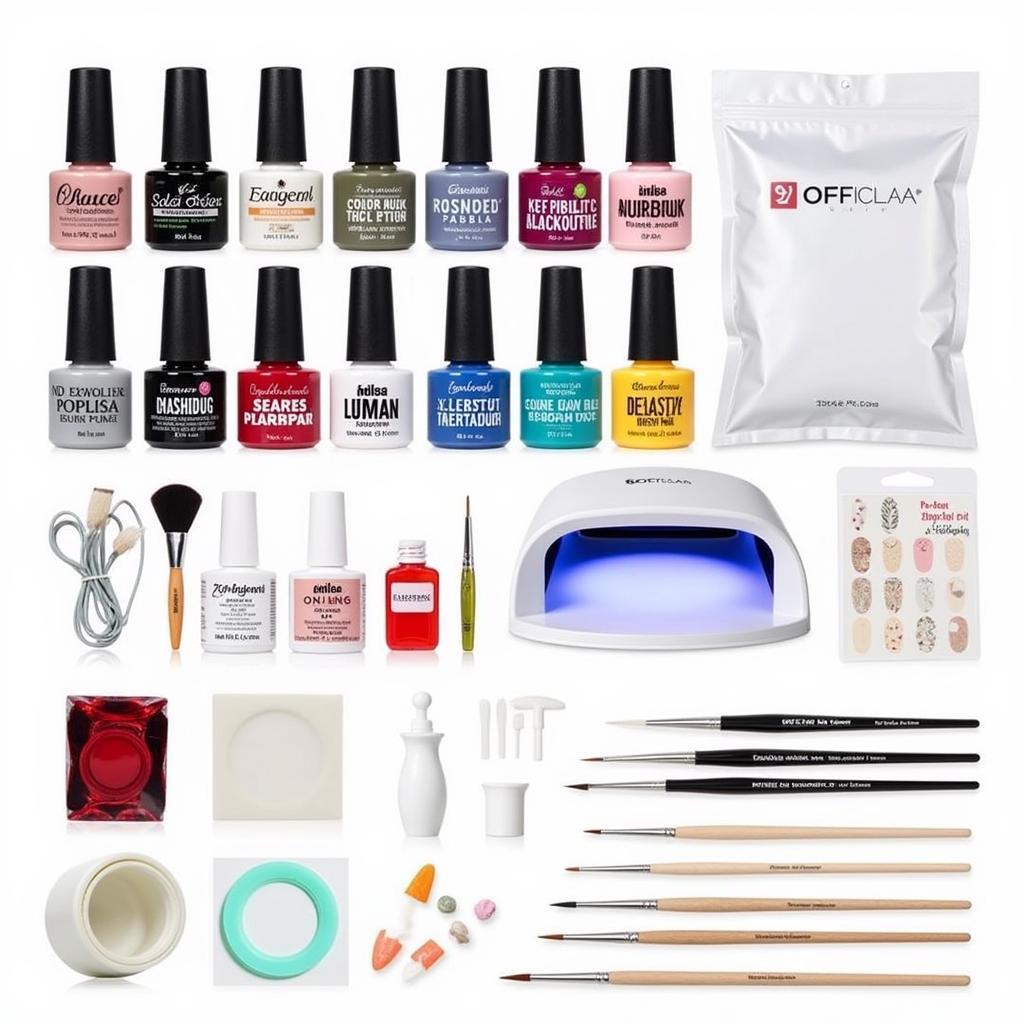Exploring the Beauty and Controversy of Nude Art Painting
Nude Art Painting, a genre steeped in history and fraught with controversy, continues to captivate and challenge viewers even today. From the classical sculptures of ancient Greece to the modern masterpieces of the 20th century, the depiction of the naked human form has served as a rich source of inspiration for artists throughout the ages.
 The Beauty of Nude Art Painting
The Beauty of Nude Art Painting
A Journey Through Time: Nude Art Throughout History
The human form has been a subject of artistic exploration since prehistoric times, as evidenced by cave paintings found around the world. However, it was during the Classical period in ancient Greece that nude art truly flourished. Greek sculptors, striving for idealized representations of the human body, elevated the nude form to an art form in itself. These sculptures, often depicting gods and heroes, celebrated the beauty, strength, and grace of the human physique.
The Renaissance witnessed a resurgence of interest in classical art, leading to a revival of nude art painting. Artists like Leonardo da Vinci and Michelangelo meticulously studied human anatomy, producing iconic works that showcased their mastery of the form. The Renaissance marked a shift in perspective, with nude art no longer solely confined to religious or mythological contexts.
 Renaissance Nude Painting
Renaissance Nude Painting
Beyond the Physical: Symbolism and Meaning in Nude Art
While the aesthetic appeal of the nude form is undeniable, nude art often transcends mere physical representation. Throughout history, artists have employed the nude figure to convey a wide range of ideas, emotions, and concepts.
-
Mythology and Religion: In many cultures, nudity has been associated with divinity and spiritual purity. From Greek mythology’s Aphrodite, the goddess of love and beauty, to Christian art’s depiction of Adam and Eve in the Garden of Eden, the nude form has served as a powerful symbol of innocence, grace, and the divine.
-
Sexuality and Desire: Nude art can also be a potent exploration of sexuality and desire. Artists have used the nude figure to celebrate the beauty and sensuality of the human body, often challenging societal norms and sparking controversy in the process.
-
Mortality and the Human Condition: The vulnerability of the naked body has also led artists to explore themes of mortality, fragility, and the ephemeral nature of life. By stripping away the trappings of clothing and societal constructs, nude art confronts viewers with the raw essence of human existence.
Navigating Controversy: Nude Art in the Modern World
Nude art has always been a subject of debate, often pushing boundaries and challenging societal norms. What is considered acceptable or offensive varies greatly across cultures and throughout history. While some view nude art as a celebration of the human form and a testament to artistic skill, others may find it provocative, exploitative, or even pornographic.
The rise of photography and film in the 20th century further complicated the debate surrounding nude art. The accessibility and realism of these mediums raised new questions about censorship, artistic expression, and the line between art and obscenity.
Nude woman wall art: A Timeless Genre
Despite ongoing controversies, nude art continues to thrive as a powerful and evocative genre. Contemporary artists continue to explore the human form in innovative and thought-provoking ways, pushing the boundaries of traditional representation. From abstract interpretations to hyperrealistic depictions, nude art remains a captivating and often controversial subject that sparks dialogue, challenges perceptions, and celebrates the beauty and complexity of the human experience.
Conclusion: Appreciating the Art of the Nude
Nude art, with its rich history and multifaceted nature, offers a unique lens through which to explore the human condition. By approaching this genre with an open mind and a willingness to engage with its complexities, we can appreciate the artistry, symbolism, and enduring power of depicting the human form in all its vulnerability and beauty.
FAQs about Nude Art Painting
-
What is the purpose of nude art? Nude art can serve a variety of purposes, from celebrating the beauty of the human form to exploring themes of sexuality, mortality, and the human condition.
-
Is all nude art considered erotic? Not necessarily. While some nude art may be intended to be erotic, many works explore other themes or focus on the artistic skill involved in depicting the human form.
-
Why is nude art often controversial? Nude art often challenges societal norms and values related to nudity, sexuality, and the human body, leading to varying opinions and interpretations.
-
Where can I see nude art? Nude art can be found in museums, galleries, and private collections worldwide.
-
How can I learn more about nude art? Erotic art blog Resources like art books, documentaries, and online articles can provide insights into the history, techniques, and symbolism behind nude art.
For any support, please contact us:
Phone Number: +842462573573
Email: danteum@gmail.com
Or visit us at: Savico Megamall, 7-9 Nguyen Van Linh Street, Gia Thuy Ward, Long Bien District, Hanoi 10000, Vietnam.
We have a 24/7 customer service team.


